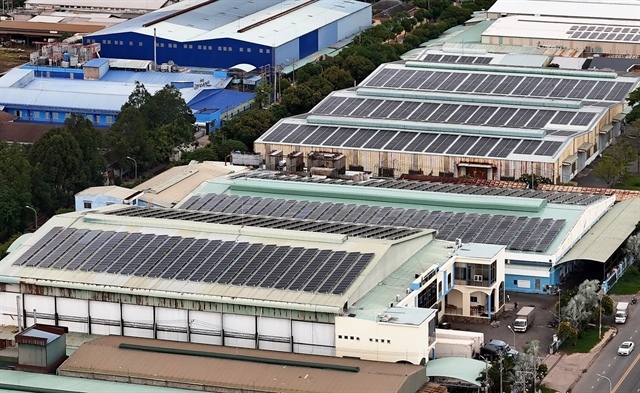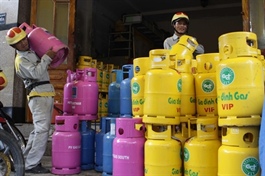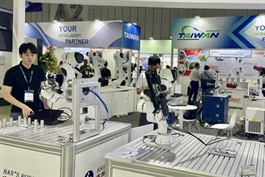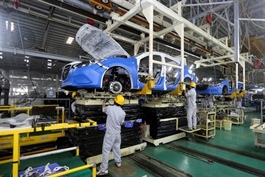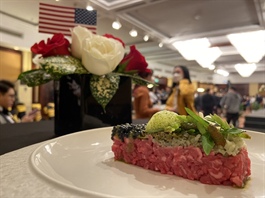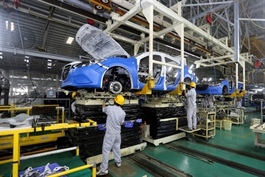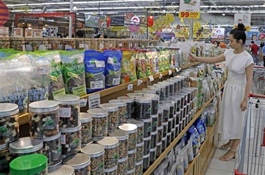Innovation vital for local retail advance
Innovation vital for local retail advance
Vietnamese consumers are entering a new era characterised by their evolving preferences, with it being more crucial than ever for businesses to understand the emerging trend of localised retail and consumption.
While Vietnam has become highly favoured by multinational companies due to its minimal disruptions in manufacturing operations during the pandemic, the presence of home-grown tech firms and a surge in tech funding are propelling the nation’s journey towards becoming a regional hub for technology.
“The number of Vietnamese startups doubled since the start of the pandemic to mid-2022, while the country drew a funding record of $2.6 billion across 2021. Coupled with improvements in logistical infrastructure that will propel e-commerce to $49 billion by 2025, Vietnam is the fastest-growing digital economy in Southeast Asia,” highlighted a June report titled “Asia: Markets to Watch 2023” by consumer insights firm WGSN.
It indicated that Vietnamese shoppers are increasingly confident in locally branded products, with approximately three-quarters expressing a preference for goods labelled “Made in Vietnam” over foreign brands. In light of this trend, brands are advised to pursue initiatives that celebrate the local community and foster connections with young Vietnamese people.
As younger Vietnamese consumers embrace hyperlocalism and rally around a home-grown creative class that aligns with their immediate values and lifestyle, brands should explore lo-fi strategies that leverage DIY user-generated content and prioritise conversational commerce to establish deeper connections with their target audience.
In the same vein, a report published in May by McKinsey & Company highlighted the significance of embracing localisation strategies, in the context that Vietnamese consumers are demonstrating a growing preference for locally branded products and services.
“Buying brands that are local or perceived to be local can also fulfill consumers’ desire to be purposeful, and strong local players seem to have significant market share. Developing these types of products is therefore likely to accelerate growth,” the report said.
According to McKinsey’s analysis, spending on large Vietnamese brands has increased significantly in the past 10 years. Whereas in 2013, local brands only took up one-third of market share in the food industry, the number rose to 38 per cent in 2021 and is likely to be higher now, while all other segments experienced a decrease.
To cater to the rising demand for localised retail experiences, businesses must focus on initiatives that celebrate and engage with the local community. McKinsey recommends brands to localise global products innovatively, adopting strategies that reflect Vietnamese consumers’ immediate values and lifestyle.
“Local brands or brands perceived to be local fare better, as Vietnamese consumers tend to derive a sense of pride from them. Companies can cater to this nuance, which includes subsegments of customers and specific budgets, by localising global product innovations while also prioritising hero stock-keeping units in traditional trade, rotating them strategically in limited shelf space,” the report suggested.
In fact, promoting consumption of goods in the domestic market has been one of the important directions in regulating production.
“In 2023, we have received hundreds of applications from foreign retail distribution systems interested in the domestic market. However, in the process of reviewing dossiers, the Ministry of Industry and Trade (MoIT) emphasised that it must be the output pillar for domestic production,” said Le Viet Nga, deputy director of the Domestic Market Department under the MoIT.
Earlier this year, a number of large local retail groups announced plans to increase investment capital and expand distribution networks. WinCommerce has outlined ambitious plans to open an additional 1,000 stores and achieve a 25 per cent increase in store revenue this year.
Simultaneously, they intend to transition towards smaller store models, such as multi-convenience stores and mini supermarkets, targeting both urban and rural areas. On the other hand, Saigon Coop is prioritising digitalisation by integrating AI technology to gain a better understanding of customers and enhance the overall shopping experience.
In parallel, the competition is fierce as big international players are also fighting for market share. Central Retail has unveiled plans to invest $1.45 billion between now and 2027, with a target of establishing 600 stores by 2027. AEON Mall aims to expand its presence with 30 new mall locations by 2030, along with 100 AEON MaxValu supermarkets in Hanoi by 2025.
Likewise, Mega Market has demonstrated expansion efforts by opening three new supply warehouses within the past 12 months, reflecting their commitment to increasing their operational footprint.






